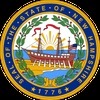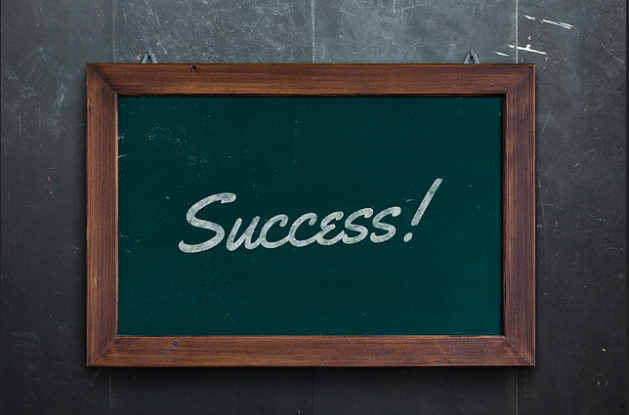SLASL Webinar #3 Pre-work
by Joanna Schimizzi 7 years, 7 months agoWhat was your biggest success in Part 10 of the template (designing your text set)?
Or
What was your biggest success in Parts 1-9 of the template?
Image source: gofishdigital.com. CC attribution


The biggest success for me in Part X involved the process of selecting an open ed anchor text. We love the text we chose, but it wasn't obvious (even after watching the "terms of use" videos on their website) if we could use/share/modify this article as part of our lesson on OER Commons. I contacted the author via Twitter, and he was awesome! Very pleased we wanted to use the text, and gave us permission to do so. This felt like a "success", because it was so cool to be in direct contact with a famous science writer! However, his article was posted on BBC Future. This made me think that they -- and not the author -- own the content. Finally the BBC replied with permission to use as we wish, non-commerically and with attribution. But I really appreciate Joanna's support in suggesting that I follow up with this inquiry to the BBC:
" Have you considered giving this content a Creative Commons license to help clarify the terms of use?"
As Joanna said to me, it would be nice if people/organizations used Creative Commons licenses so that it was more clear to educators how we can use their work. This makes me wonder if authors/content providers aren't always aware of the impact they might have on education, and perhaps we need to help them realize this! In the end, though, I consider this entire experience a success because I continue to gain new insight into open educational resources, and that is a good thing. :-)
I think the biggest success is that part IX is finished and we have a plan for the lesson. Finding the anchor text for part X has been difficult. FInding one with open for creative commons and having it be ok for sophomores have been difficult! Now that we have text to use and a plan for the lesson I can finally see what I want the lesson to look like for the week and have a goal to reach. Hopefully the students will be as excited as I am!
Building the text set always pushes my creativity with the unit. I find that we stumble upon some really good texts that push our thinking on the topic. Bad texts also push our thinking. They make us really focus in on; what do we want students to be getting out of this unit, does this text present new challenges, how do we get students to enjoy this text as much as we do, etc. I also like the varitey of text sources, I think it has improved the student experience in physics by allowing them to see science in a varity of formats.
There are a lot of text that comment on our topic of modern physics. I think our biggest success was our discussion as a cohort on the attributions of a good anchor and supplimentary text. The need for the text to have a creative commons licences at first seemed to limit our choices but that just made us find a variety of different text with different reading levels and voice. As we look ahead to the next part of the rubric it is exciting to see how each lesson will be based around literacy.
Focusing on choosing the anchor text helped us to focus on what we wanted this unit to be for our students. And it led us to good discussions about our decisions for supporting texts and pulling activities in the unit together. After looking at many texts and then making the decision on an anchor text to use, once that decision was made, it seemed like the rest of Part X fell into place easier. Finding what we felt was a good anchor text was not easy and I am really curious to see how it works out with our students.
Our group is very pleased that we have finally narrowed down our choice of anchor text!!!!!!!! We looked through multiple readings about superbugs and none of them really fit what we wanted our learners to know about antibiotic resistance and immunology. We are still building our text set, but are confident that we have some good video, lab activities and other readings to go along with our anchor. We are hoping to get a get a guest speaker to talk to the students.
My biggest success is finding text set to refocus my SLASL unit. The anchor text for my unit is an article on the Implications of the Genome Project for Medical Science (from NIH) which I will use when introducing DNA/RNA unit on May 1. I updated my unit to understand the relationship of how genetic and DNA/RNA expression causes variation in the human genome and thus medical issues. I have kept my genetics project on a specific disease intact, but rather than ending it at genetics, I extended its due date so that they can relate the medical issue to DNA mutation and protein variation. I am hoping that students will be more successful in understanding the DNA relationship as a result of using these texts. Although their were few readable text on OER on this topic, I did find a NOVA video which I used when I was absent ( I was ending basic genetics). The students enjoyed the video and when I introduced their project this week a more varied group of disorders were chosen. In addition, students didn't just choose from the list, but some looked up additional ones as well. One article from my set describes how human genetic disorders are very complicated and specifically refers to DNA mutations. I am hoping that this article will be great help to them when using the NCBI-OMIM site(National database) for their disease that they are researching. Included in my text set are two articles that describe a direct to consumer genetic risk test for diseases and general fact sheet on genetic testing. After they present their genetic disorder, I am including an open response prompt about the use of genetic testing on their previously researched disorder. This would include researching if a test if available for that disorder and be able to make an informed decision on the value or the need for testing. .
Bev stated: "In addition, students didn't just choose from the list, but some looked up additional ones as well." Project-based science engages our students in real and meaningful problems that are important to them. Our "driving question": How should information from the human genome project be used in the face of human medical interventions with genetic disorders? guides instruction and the students find it meaningful and important. Students are investigating specific questions and problems central to the unit. The technology serves as the cognitive tool to enhance learning. I am looking forward to the student-created artifacts!
I think the biggest success in Part 10 (after FINALLY finding a primary source) was coming up with the questions to inspire inquiry. Our questions activate prior knowledge and are aimed at fostering discussions (either whole class or small group). I'm looking forward to seeing the successes with the unit.
Our biggest success, for me, was the very collaborative nature of our Anchor Text questions. We all contributed, discussed, and agreed upon what I believe are a strong set of questions.